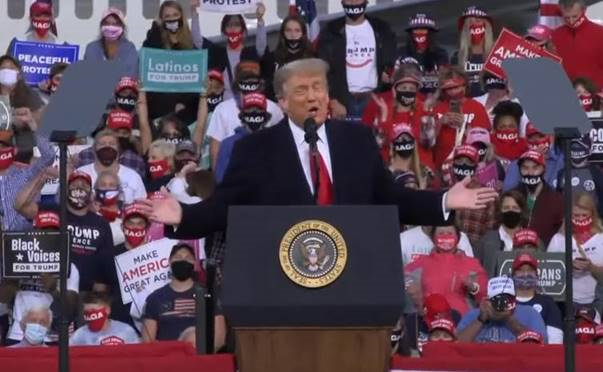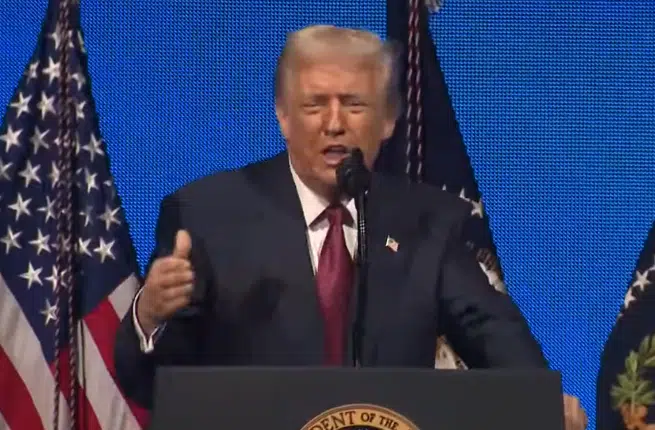Have Joe Biden and Democratic Party leaders convinced their own voters that it is unsafe to go out to the polls and vote in 2020 because of the deadly Chinese coronavirus?
According to an Aug. 9-12 poll by Wall Street Journal/NBC News, 47 percent of Biden supporters plan on voting by mail this year, compared with just 11 percent of President Donald Trump’s supporters. Meaning, Democrats and supporters of former Vice President Joe Biden are far less likely to vote in person in 2020.
While plans might change between now and Election Day, it is little wonder why Biden and Democrats including House Speaker Nancy Pelosi (D-Calif.) have been emphasizing mail-in voting, even floating conspiracy theories that U.S. Postal Service is engaged in a conspiracy with the White House to steal the election.
You know they’re worried. Why? A certain percentage will either fail to request an absentee ballot or to turn it in on time. Therefore, without an extensive operation to at least match what they normally would get via in-person voting, Democrats are likely doomed to lose the election in a landslide.
That is why on Election Day, the American people are unlikely to learn immediately who won the election, but it is likely that President Donald Trump will appear to be safely in the lead, only to watch that lead start to diminish as post-Election Day mail-in votes are tallied in the days afterward.
This has led some political analysts like Hawkfish CEO Josh Mendelsohn to suggest that a “red mirage” could form on the night of the election: “When every legitimate vote is tallied and we get to that final day, which will be some day after Election Day, it will in fact show that what happened on election night was exactly that, a mirage… It looked like Donald Trump was in the lead and he fundamentally was not when every ballot gets counted.”
On the surface, the question may be determined by whether Democrats are able to put enough votes in the mail to beat Trump’s Election Day turnout machine — and whether those votes arrive in time to be counted. Republican advisors have suggested Trump will need teams of lawyers in swing states to challenge potentially fraudulent mail-in ballots coming in waves days after the election.
But maybe, to win, Trump and the GOP don’t merely need more early voting, Election Day voting and lawyers. Those will all be needed, too, but the real key to victory could be more Republican-submitted absentee ballots. Remember, a certain, smaller percentage of Republicans are worried about the virus, too, as it impacts voting.
What if Republicans were to also offset the Democrats’ mail-in scheme with an extensive mail-in voter identification and delivery operation of their own? After all, telling the set percentage of Republican voters who typically vote by mail, usually seniors, that it is not safe to vote by mail might be just as harmful to Trump’s chances in November, as Biden telling his supporters that it’s unsafe to vote in person could be to his.
In any given election year, about one-quarter of voters submit ballots via mail anyway, according to the U.S. Election Assistance Commission. Republicans need to make sure that everyone who typically votes via absentee for medical reasons or otherwise still does so this year.
An analysis by the Washington Post’s Philip Bump in May suggested that absentee ballots by Republicans could have helped produce the margins of victory for Trump in 2016 in Michigan, Wisconsin and Utah. In those states, “the margin by which Trump won is actually smaller than the difference in the absentee votes likely cast by Democrats and Republicans.”
Meaning, the more Republicans who vote via absentee ballot, the less likely Democrats will be able to flip the election days or weeks after the voting is done because they’ll have that much less of a margin to work with.
To be fair, President Trump has attempted to thread a needle on this issue, suggesting that normal absentee balloting is fine, but universal mail-in balloting could pose problems with fraud. At an Aug. 13 press briefing, Trump said, “Absentee ballots, by the way, are fine. But the universal mail-ins that are just sent all over the place, where people can grab them and grab stacks of them, and sign them and do whatever you want, that’s the thing we’re against… Again, absentee, good; universal mail-in, very bad.”
Still, the Trump campaign needs to identify likely Republican voters who might be afraid to submit their ballots in person for fear they might get sick — especially the 11 percent identified in the Wall Street Journal/NBC News poll — and ensure they either request and/or submit their ballots in time for the election. Encourage in-person voting, yes, but also facilitate absentee balloting for Republicans who need it.
That is, to fight fire with fire.
That is certainly what Republicans are doing in Congressional races in California, when in 2018 a number seats that otherwise appeared to have been won on election night were lost to mail-in voting and ballot harvesting, a legal practice in the state. Two years later, California Republicans appear to have learned their lesson.
An analysis by the Los Angeles Times’ Sarah Wire found: “Republicans have vowed to improve their ground game for 2020. Early last year, the national Republican campaign arm hired a state director — Orange County native Sam Spencer — to lead its comeback operation. The state party has recruited 17,000 volunteers to build relationships with likely voters in their communities and collect their ballots in the fall.”
U.S. Rep. Mike Garcia’s (R-Calif.) special election victory in March in California could be attributed to Republicans successfully taking advantage of the state’s pseudo mail-in, ballot harvesting system.
In other words, it has already been shown that Democrats’ advantage in this area can not only be neutralized, but overcome and made a Republican advantage.
The good news is everyone already knows what the rules are going to be in every state and what the lay of the land will be. So far, nine states plus the District of Columbia are actively sending mail-in ballots to voters whether they request one or not: California, Colorado, Hawaii, Nevada, New Jersey, Oregon, Utah, Vermont and Washington.
Of those Colorado, Nevada and Utah stand out as potential problems for Republicans, where without a robust mail-in operation, the potential of Trump winning the state could be diminished. However, when one considers the picture on Capitol Hill, all but Vermont and Hawaii are relevant in terms Congressional races.
Beyond that are those states that are automatically mailing absentee ballot applications to residents, according to a Brookings Institution state-by-state breakdown: Delaware, Illinois, Iowa, Maryland, Massachusetts, Michigan, Nebraska, North Carolina, Ohio and Wisconsin. In all other states, notably including Pennsylvania and Florida, residents have to actively request an absentee ballot, potentially muting the likelihood of fraud.
Of those states mailing applications, Iowa, Michigan, Nebraska, North Carolina, Ohio and Wisconsin are all states Trump won in 2016 and could be potentially flipped after Trump appears to win them on election night.
Party officials accustomed to mail-in voting in Colorado, Oregon and Washington should be tasked with getting mail-in operations up and running quickly in all of the aforementioned states, both those with automatically sent ballot or absentee applications.
Then there is the matter of how long after Election Day ballots can be counted. Of the states that either will be mailing ballots directly to voters or mailing absentee applications automatically, Colorado, Michigan, Ohio and Utah will be allowing ballots to be counted beyond five days after Election Day. In Michigan, any ballot postmarked by Nov. 2 and prior to the state’s certification 14 days later gets counted, per a judge’s ruling.
And, in Pennsylvania — where again, voters have to actively request an absentee ballot by Oct. 27 — a judge has ruled that ballots must be submitted with the additional ballot secrecy envelope in order to be counted. The GOP needs to make sure its supporters know the rules.
The weeks after Election Day 2020 promise to be as nerve-wracking as the state of Florida in 2000, turning what might appear to be a rout by President Trump against Biden on election night into a very close call or even a constitutional crisis. That is, unless Republicans can successfully offset Democrats’ mail-in scheme with their own mail-in voting operation.
The Trump campaign and Republicans may need more early voting, day-of voting and lawyers to wage the legal battle ahead in the post-election environment, but what they may really need are more envelopes.
Robert Romano is the Vice President of Public Policy at Americans for Limited Government.







